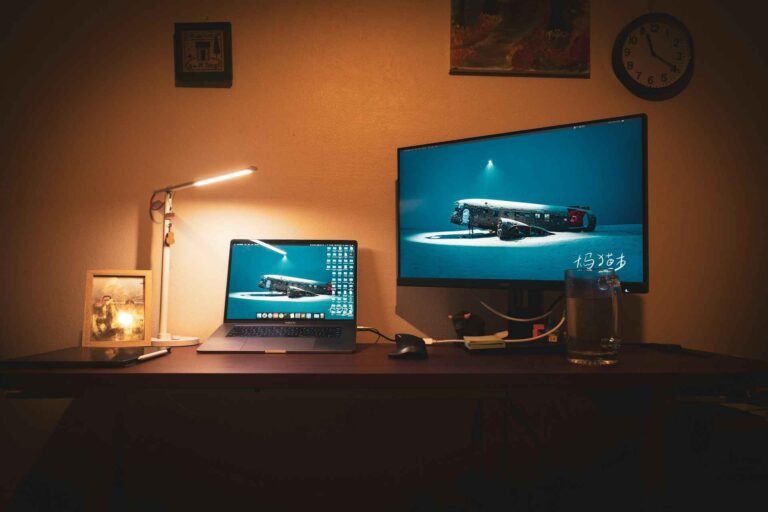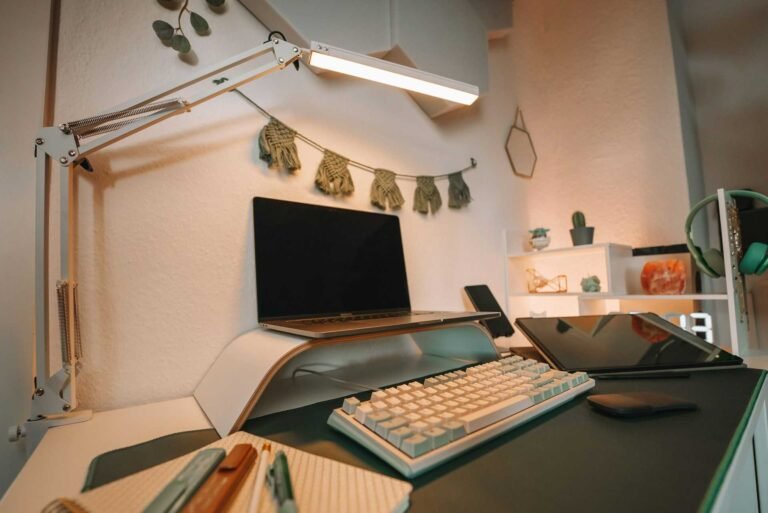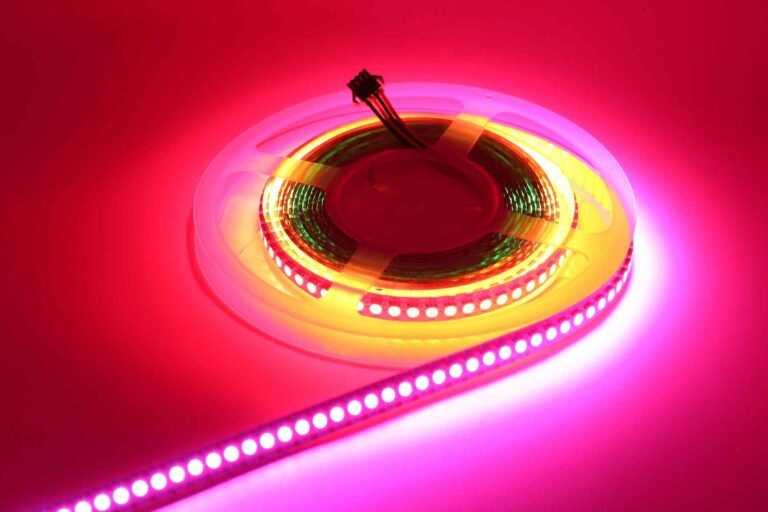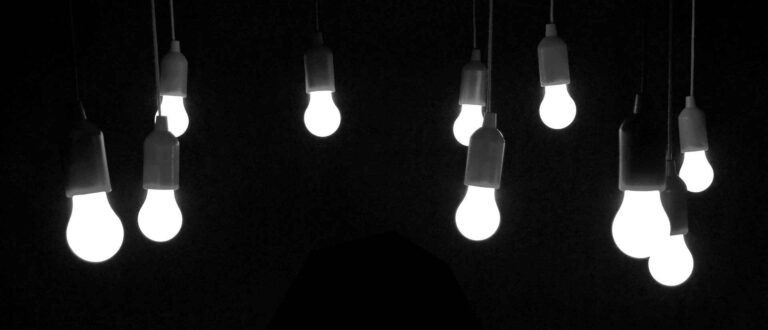LED Light Lifespan: Get More Years from Your Desk Lighting
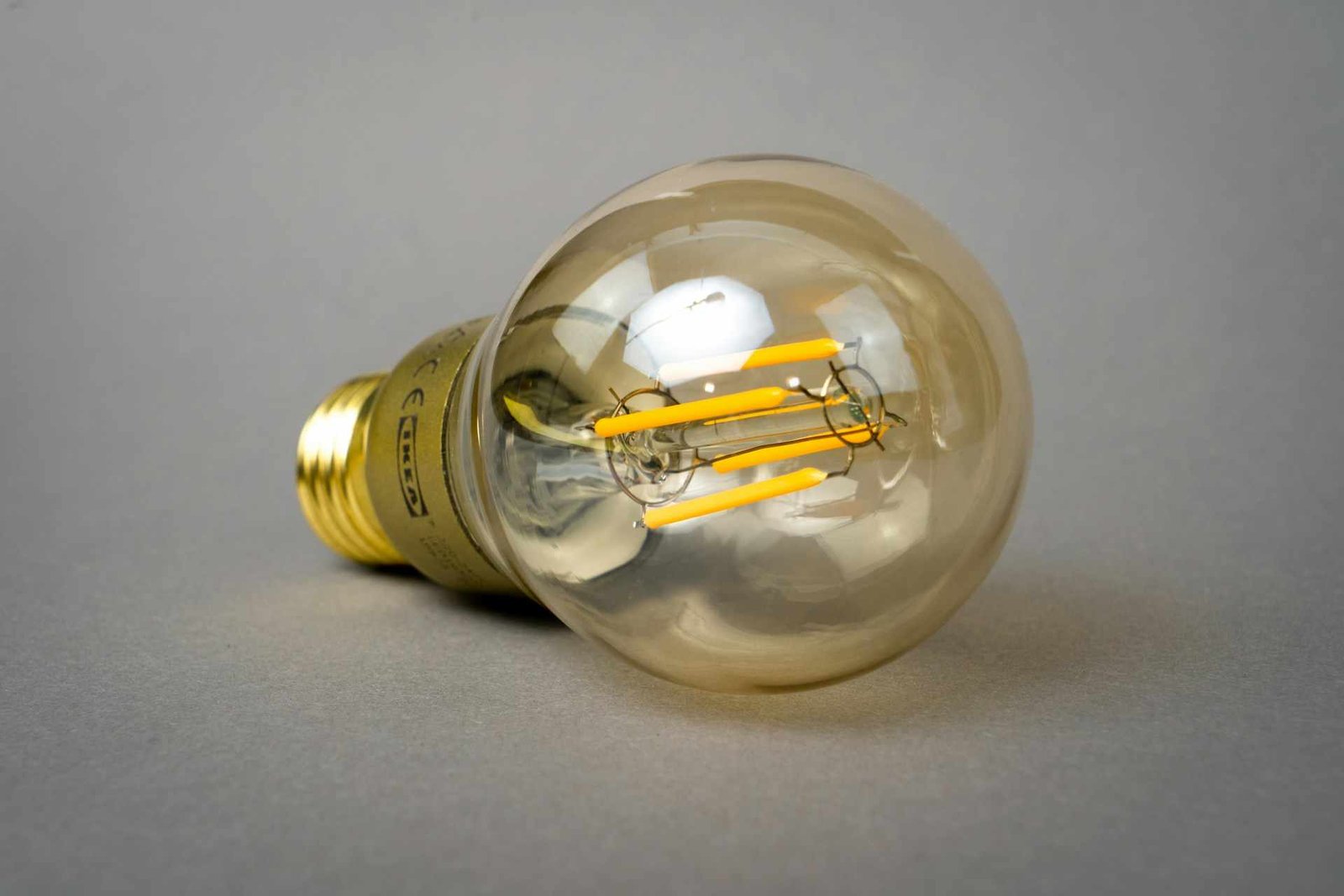
You’re happily working away at your desk when suddenly your trusty desk lamp starts flickering like it’s trying to send you morse code. Or maybe you’ve noticed that the cool light and warm light you carefully selected for your workspace isn’t quite as bright as it used to be. Before you start questioning whether your eyes are playing tricks on you, it’s worth understanding what’s really happening with your LED lights and how long they’re actually supposed to last.
The world of LED light lifespan can feel like navigating a maze of technical jargon and manufacturer claims that seem almost too good to be true. But here’s the thing, understanding how long your LED bulbs will actually serve you can save you both money and frustration in the long run. We’re diving deep into everything you need to know about LED lifespan, from the science behind those impressive longevity claims to practical tips that’ll help you squeeze every last lumen out of your investment.
What Determines LED Light Lifespan?
When we talk about LED light lifespan, we’re not just throwing around random numbers that manufacturers pulled out of thin air (though sometimes it might feel that way). The lifespan of LED lights is actually determined by several key factors that work together like a well-orchestrated symphony, or sometimes like a chaotic garage band, depending on the circumstances.
The Heat Factor: Your LED’s Biggest Enemy
Temperature plays a massive role in determining how long your LEDs will last. Think of heat as the arch-nemesis in every superhero movie, it’s constantly working against your LED’s mission to provide reliable lighting. When LEDs get too hot, their internal components start breaking down faster than a cheap umbrella in a windstorm.
This is why you’ll often see those heat sinks and cooling fins on LED fixtures that look like tiny radiators. They’re not just for show, they’re working hard to keep your bulbs cool and extend their operational life. The difference between a well-cooled LED and one that’s running hot can be thousands of hours of service life.
Quality Components Make All the Difference
Not all LEDs are created equal, and this becomes crystal clear when you look at their lifespans. High-quality LEDs use better materials, more sophisticated driver circuits, and undergo more rigorous testing than their budget counterparts. It’s like comparing a hand-crafted watch to a disposable one from a vending machine, both tell time, but one’s going to be doing it for decades longer.
The driver circuit, in particular, is often the weak link in cheaper LED products. This little component regulates the power flowing to the LED chip, and when it fails, your whole light goes dark. Premium LEDs invest in robust driver circuits that can handle voltage fluctuations and maintain consistent performance over time. Choosing a premium LED bulb rather than a budget version is one of the simplest ways to avoid early failures.
Average LED Bulb Life: What the Numbers Really Mean
Here’s where things get interesting. Most LED manufacturers proudly slap ratings like “25,000 hours” or “50,000 hours” on their packaging, but what do these numbers actually mean for your daily life? Let’s break down the average LED lifespan in terms that make sense for real-world use.
Understanding the Hour Game
The average led bulb life expectancy typically ranges from 15,000 to 50,000 hours, depending on the quality and type of LED. But let’s put this into perspective with some simple math that won’t require you to dust off your old calculator:
| Daily Usage | 25,000 Hour LED | 35,000 Hour LED | 50,000 Hour LED |
|---|---|---|---|
| 3 hours | 22.8 years | 32 years | 45.6 years |
| 6 hours | 11.4 years | 16 years | 22.8 years |
| 8 hours | 8.5 years | 12 years | 17.1 years |
| 12 hours | 5.7 years | 8 years | 11.4 years |
These numbers assume you’re using your LEDs consistently every single day, which honestly, most of us aren’t doing with every light in our homes. Your dimmable LED desk lamps might get heavy use during work hours, but that bedroom lamp probably sees much lighter duty.
The Reality Check
While these theoretical lifespans look impressive on paper, real-world conditions often tell a different story. The average life of LED lights in actual use tends to be somewhat shorter than laboratory conditions would suggest. Factors like power surges, temperature fluctuations, and manufacturing variations all play a role in determining whether your LED will reach its full potential lifespan.
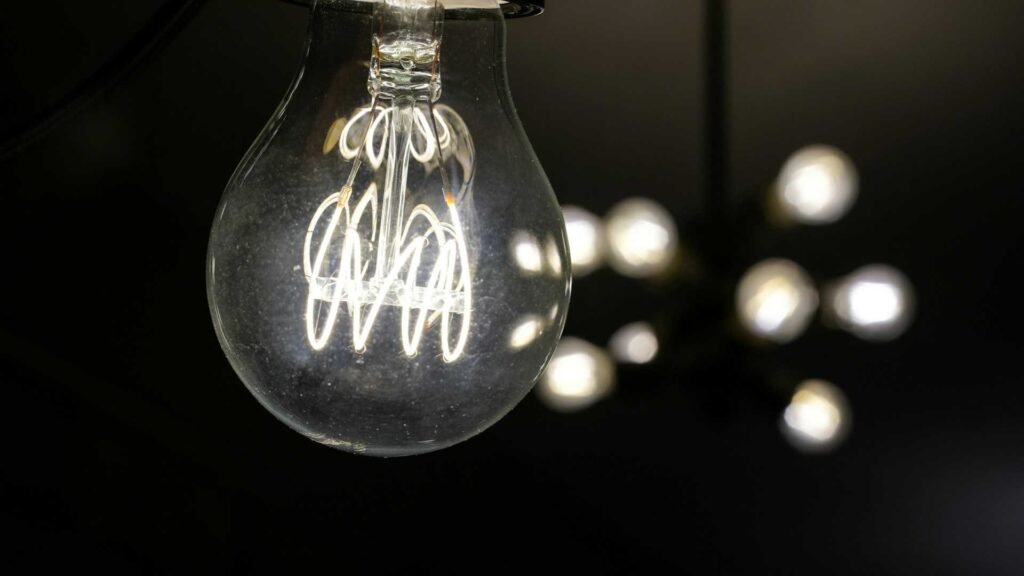
How to Calculate LED Lifespan for Your Specific Needs
Knowing how to calculate LED lifespan isn’t just about impressing your friends with math skills, it’s about making informed decisions when you’re standing in the lighting aisle trying to decide between different options. The basic calculation is surprisingly straightforward, but there are some nuances worth considering.
The Basic Formula
To calculate expected lifespan in years, you’ll use this simple formula: Expected Years = Rated Hours ÷ (Daily Hours × 365)
For example, if you have a 30,000-hour LED that you use 5 hours per day: 30,000 ÷ (5 × 365) = 30,000 ÷ 1,825 = 16.4 years
Adjusting for Real-World Conditions
Smart buyers know to apply a “reality factor” to these calculations. Most experts suggest reducing the manufacturer’s rated hours by 10-20% to account for real-world conditions. This isn’t being pessimistic, it’s being practical.
Consider factors like:
- How often you turn the light on and off (frequent cycling can reduce lifespan)
- The ambient temperature where the LED operates
- Power quality in your area
- Whether you’re using dimming features regularly
Maximizing Your LED Bulb Lifetime: Practical Tips
Getting the most out of your LED investment doesn’t require a degree in electrical engineering, just some common sense and a few simple practices. The difference between babying your LEDs and treating them roughly can add years to their service life.
Installation and Environment Matter
Proper installation is like giving your LEDs a good foundation to build upon. Make sure they’re securely mounted and have adequate ventilation. If you’re dealing with USB powered desk lights, ensure they’re getting clean, stable power to avoid stress on the internal components.
Avoid installing LEDs in extremely hot locations like directly above ovens or in poorly ventilated fixtures. These conditions can dramatically reduce LED lamp lifespan and leave you replacing bulbs far sooner than expected.
Smart Usage Habits
While LEDs handle frequent on-off cycles much better than traditional bulbs, they still prefer steady operation over constant switching. If you’re the type who flicks lights on and off every time you walk through a room, consider motion-sensing options or smart timer table lamps that can manage this automatically.
Temperature control remains crucial throughout the LED’s life. Keep fixtures clean and dust-free, as accumulated dirt acts like a blanket, trapping heat and forcing your LEDs to work harder than necessary.
The Dimming Factor
Running LEDs at lower intensities reduces heat generation and stress on components. However, make sure you’re using compatible dimmers designed for LED loads, using the wrong dimmer can actually shorten lifespan.
LED Light Bulb Life Span vs. Traditional Lighting
The comparison between LED bulb life span and traditional incandescent or fluorescent options isn’t even close, it’s like comparing a marathon runner to someone who gets winded walking to the mailbox. But the differences go beyond just raw longevity.
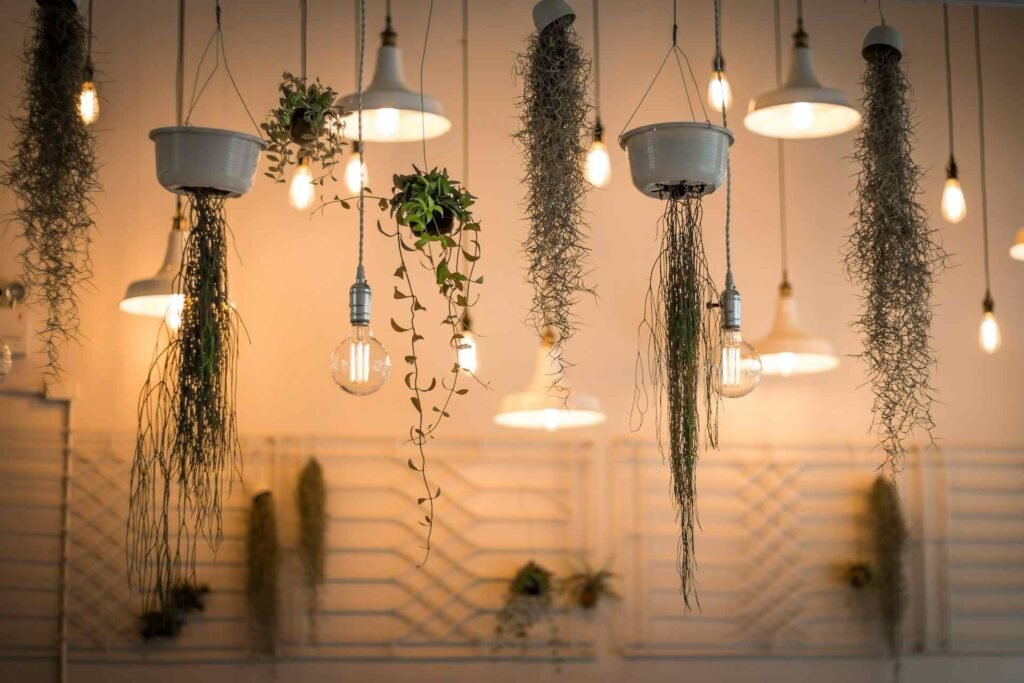
The Numbers Don’t Lie
Traditional incandescent bulbs typically last about 1,000 hours, while compact fluorescents might give you 8,000-10,000 hours if you’re lucky. LEDs start at around 15,000 hours for budget options and can reach 50,000+ hours for premium models. Even the most pessimistic LED still outlasts traditional options by a significant margin.
Beyond Just Longevity
LED bulb lifetime advantages extend beyond just how long they last. They maintain their brightness much better over time compared to fluorescents, which can lose significant output as they age. LEDs also don’t have the sudden failure mode of incandescents, they gradually dim rather than burning out completely. If brightness matters for tasks, a high-lumen LED desk lamp is a worthwhile upgrade.
The environmental impact is worth considering too. Longer-lasting LEDs mean fewer bulbs in landfills and less frequent manufacturing, making them a more sustainable choice even before you factor in their energy efficiency.
Understanding LED Degradation and Performance Over Time
LEDs don’t just work perfectly for 25,000 hours and then suddenly die like they’re following a script. Understanding how they actually age can help you make better decisions about when to replace them and what to expect from your lighting over time.
The Gradual Decline
Most LEDs follow a predictable degradation pattern. They typically maintain about 90% of their initial brightness for the first third of their rated life, then gradually decline. By the time they reach their rated lifespan, they’re usually producing about 70% of their original light output, this point is often considered “end of useful life” even though the LED is still technically functioning.
This gradual decline is actually a feature, not a bug. It gives you time to notice the change and plan for replacement rather than being suddenly left in the dark. If you’ve ever wondered how many lumens do I need for a desk lamp, remember that this number might need adjusting as your LEDs age.
Factors That Accelerate Aging
Some conditions can speed up this natural aging process. High temperatures are the biggest culprit, but power quality issues, manufacturing defects, and even the specific color temperature of the LED can play a role. Cool white LEDs often last longer than warm white ones due to differences in phosphor formulations.
Motion sensing table lamps might experience more stress due to frequent cycling, but modern LEDs handle this much better than older generations.
Frequently Asked Questions
How long do LED lights actually last in real-world conditions?
In real-world use, most quality LEDs will provide 15,000 to 35,000 hours of service, which translates to roughly 10-20 years for typical home use. This assumes average usage patterns and reasonable environmental conditions. Budget LEDs might fall short of these numbers, while premium options can exceed them.
Can I extend my LED’s lifespan by using it less frequently?
Yes, but the relationship isn’t perfectly linear. LEDs do benefit from reduced usage, but they’re designed for regular operation. Extremely infrequent use can sometimes cause issues with driver circuits, though this is rare. The sweet spot is regular but moderate use rather than heavy continuous operation.
Do LED bulbs really last 25,000+ hours as advertised?
Quality LEDs from reputable manufacturers can indeed reach or exceed their rated lifespans under proper conditions. However, real-world factors like temperature, power quality, and usage patterns often reduce this somewhat. It’s reasonable to expect 80-90% of the rated lifespan in typical home or office environments.
What’s the difference between rated hours and actual lifespan?
Rated hours represent laboratory testing under ideal conditions with specific on-off cycles and temperatures. Actual lifespan depends on your specific usage patterns, environmental conditions, and the quality of your electrical supply. Most LEDs will achieve 70-90% of their rated lifespan in normal use.
Should I replace LEDs before they completely fail?
For critical applications like desk lamps for Zoom calls, consider replacing LEDs when they’ve dimmed to about 80% of original brightness. For general lighting, you can usually wait until they reach 70% or until the light quality no longer meets your needs.
Do all LED types have the same lifespan?
Not at all. Different LED types, color temperatures, and applications have varying lifespans. Generally, simpler LED designs last longer than complex ones, and cooler color temperatures often outlast warmer ones. Specialized LEDs may have different lifespan characteristics due to their specific design requirements.
Conclusion
We’ve covered a lot of ground in our journey through the world of LED light lifespan, and hopefully, you’re now armed with enough knowledge to make your next lighting decisions with confidence. The bottom line is that LEDs offer impressive longevity compared to traditional lighting options, but getting the most out of them requires understanding both their strengths and limitations.
Remember, those impressive hour ratings aren’t just marketing fluff, they’re achievable under the right conditions. By keeping your LEDs cool, using them appropriately, and choosing quality products from the start, you can enjoy years of reliable lighting that won’t leave you fumbling around in the dark at inconvenient moments.
The next time you’re shopping for lighting, whether it’s upgrading your workspace or finally replacing that flickering lamp that’s been driving you crazy, you’ll know exactly what questions to ask and what numbers actually matter. After all, there’s something deeply satisfying about making a purchase that you know will serve you well for years to come. And with LEDs, that’s exactly what you’re getting, a lighting solution that’s in it for the long haul, just like that reliable friend who’s always there when you need them.
Looking for more? Check out our desk lighting category for more articles and guides that may interest you!
Featured image credit: Photo by Mika Baumeister on Unsplash
This content is for informational purposes only. Please verify current information directly on the retailer’s site before purchasing.

